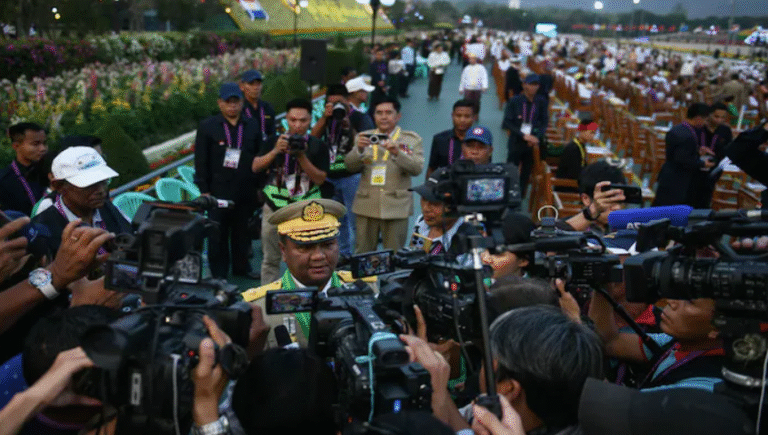
Former US President Donald Trump seen speaking during a formal meeting, as captured in this high-resolution image.
Washington, D.C. – Former U.S. President Donald Trump has once again made headlines by escalating trade tensions, announcing a significant round of new tariffs targeting several countries. The decision, which revives the trade disputes that marked much of his previous tenure, has raised concerns among international policymakers and global markets alike.
In a statement released on Monday, Trump revealed that higher tariff rates would soon be imposed on 14 countries, with some nations facing duties as high as 40%. The announcement, made via his Truth Social platform, signals a fresh chapter in ongoing trade negotiations that have kept diplomats and economic analysts on edge since early this year.
📌 Countries Facing the Heaviest Tariffs
Among those hit hardest are Myanmar and Laos, each facing a staggering 40% tariff rate on their exports to the United States. Other nations, including Thailand, Cambodia, and Bangladesh, are also set to bear the brunt of these new trade restrictions.
Here’s a breakdown of the new tariff rates Trump announced:
- Laos: 40%
- Myanmar: 40%
- Thailand: 36%
- Cambodia: 36%
- Bangladesh: 35%
- Serbia: 35%
- Indonesia: 32%
- South Africa: 30%
- Bosnia and Herzegovina: 30%
- Malaysia: 25%
- Tunisia: 25%
- Japan: 25%
- South Korea: 25%
- Kazakhstan: 25%
Trump emphasized that these measures are part of a broader effort to protect American industries and ensure “fair, reciprocal trade” for U.S. businesses.
📌 Negotiations Still Ongoing
Despite the aggressive move, Trump hinted that there’s still room for diplomacy. He described the August 1 deadline for finalizing trade deals as “not 100 per cent firm,” leaving the door open for continued negotiations with affected countries.
“Maybe adjust a little bit, depending… We’re not going to be unfair,” Trump stated, suggesting he might consider concessions from nations willing to cooperate.
So far, Washington has finalized agreements with the United Kingdom and Vietnam. Talks with India are reportedly nearing completion, while discussions with other nations remain uncertain.
📌 Retaliation Warnings and Reciprocal Tariffs
In a pointed message to America’s trading partners, Trump made it clear that any retaliatory tariffs would be swiftly countered. According to his statement, if any country raises tariffs on U.S. goods, an equivalent increase will be imposed on their exports to the United States.
“If for any reason you decide to raise your tariffs, then, whatever the number you choose to raise them by will be added onto the 25% that we charge,” Trump warned, specifically addressing Japan and South Korea.
Notably, these new tariffs will not stack on top of existing sector-specific tariffs, such as those previously imposed on automobiles, steel, or aluminum.
📌 Global Trade Tensions Escalating
The new tariffs come amid heightened global trade tensions that have unsettled financial markets and prompted urgent meetings in economic ministries around the world. The international community has until August 1 to negotiate exemptions or reach new agreements before these hefty tariffs take effect.
An executive order signed by Trump on Monday extended a previous deadline for trade negotiations, granting nations a temporary reprieve. However, with talks stalled in several cases, the threat of a full-scale trade war remains.
📌 What This Means for the Global Economy
Economic experts warn that these latest moves could trigger retaliatory measures, disrupt supply chains, and lead to increased prices for consumers worldwide. The countries targeted by the new tariffs are primarily emerging economies in Asia and Africa, with the potential for economic instability if trade flows are significantly hindered.
Investors and policymakers alike will be closely watching the coming weeks to see which nations can broker last-minute deals and which might face the full brunt of these new tariffs.


